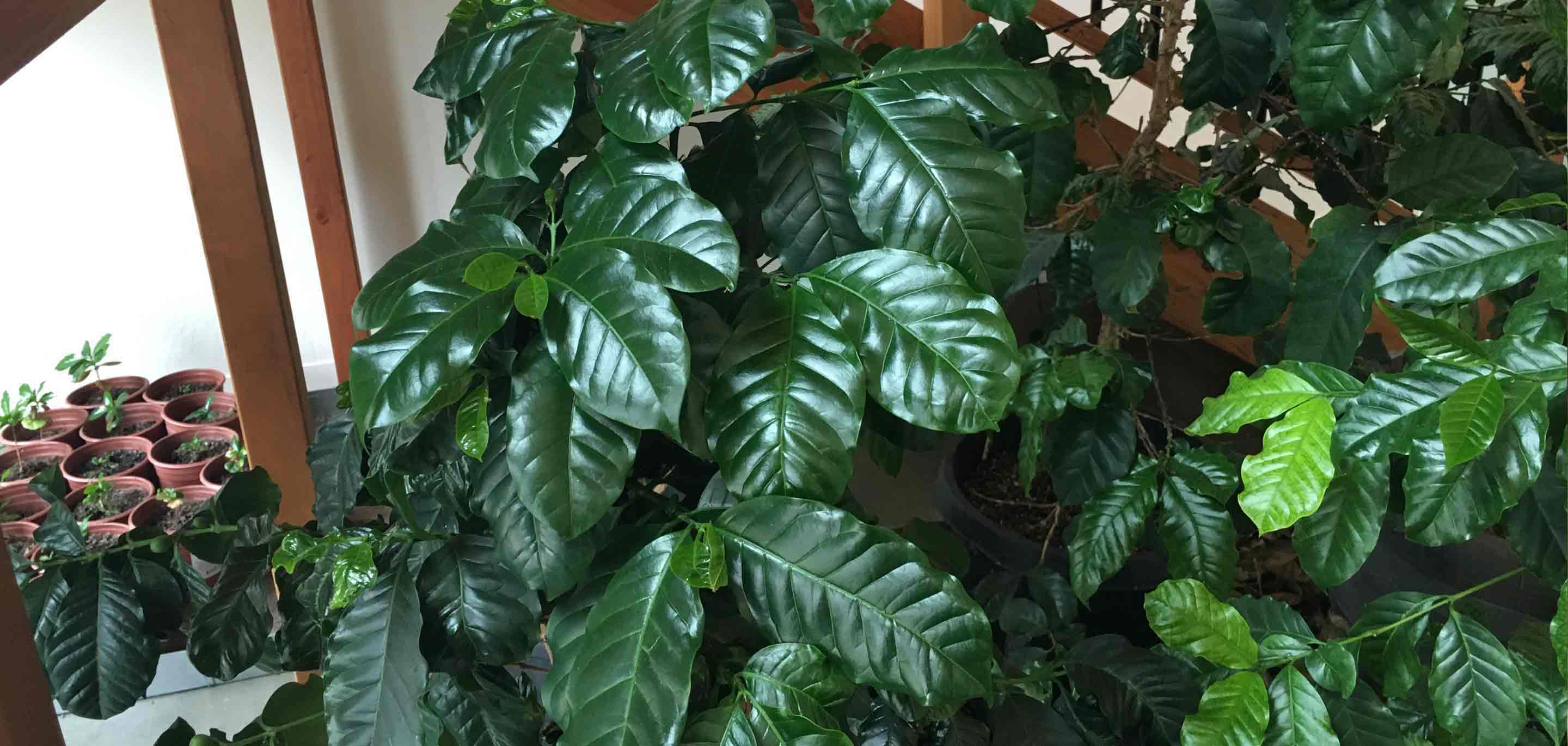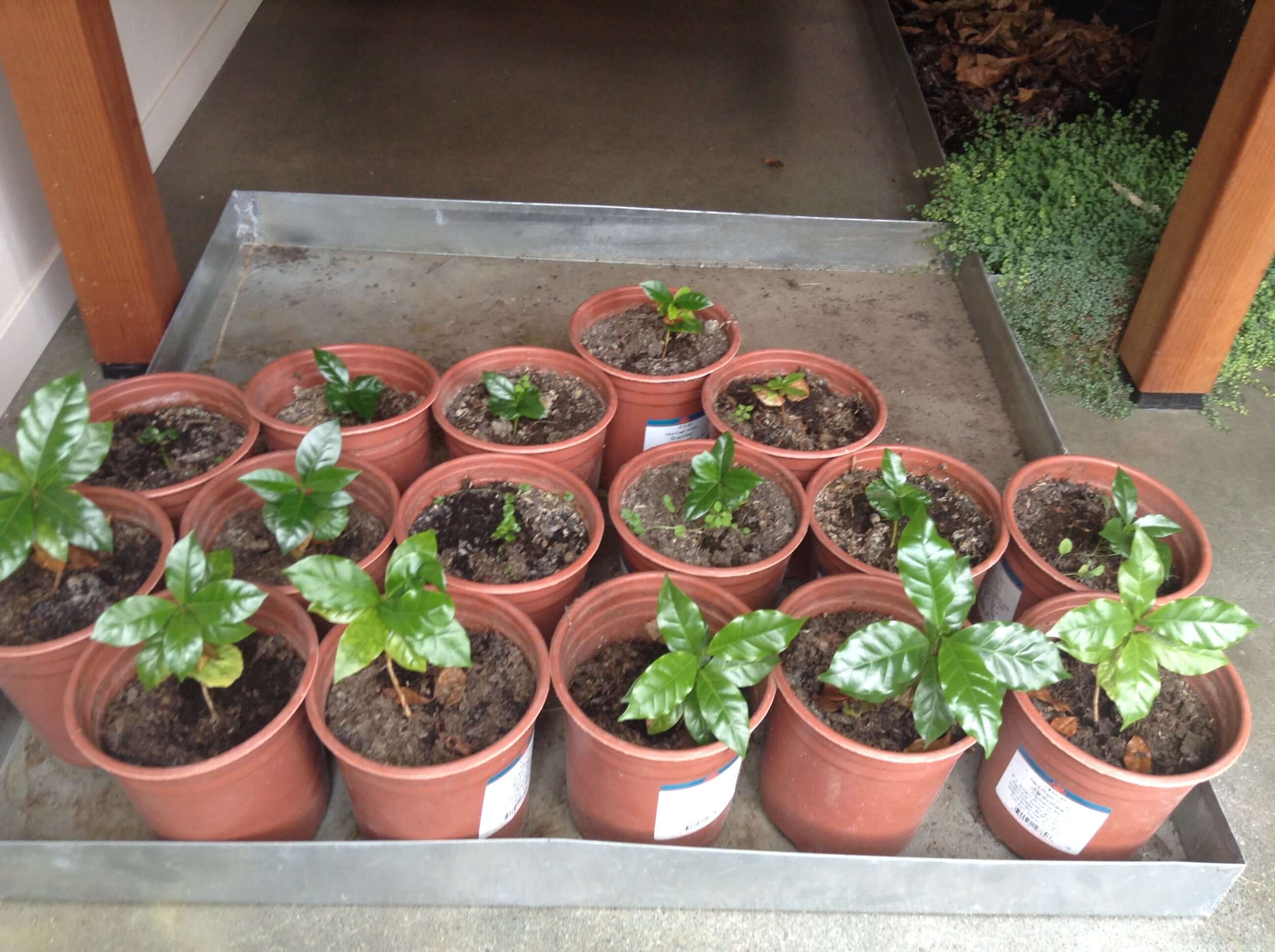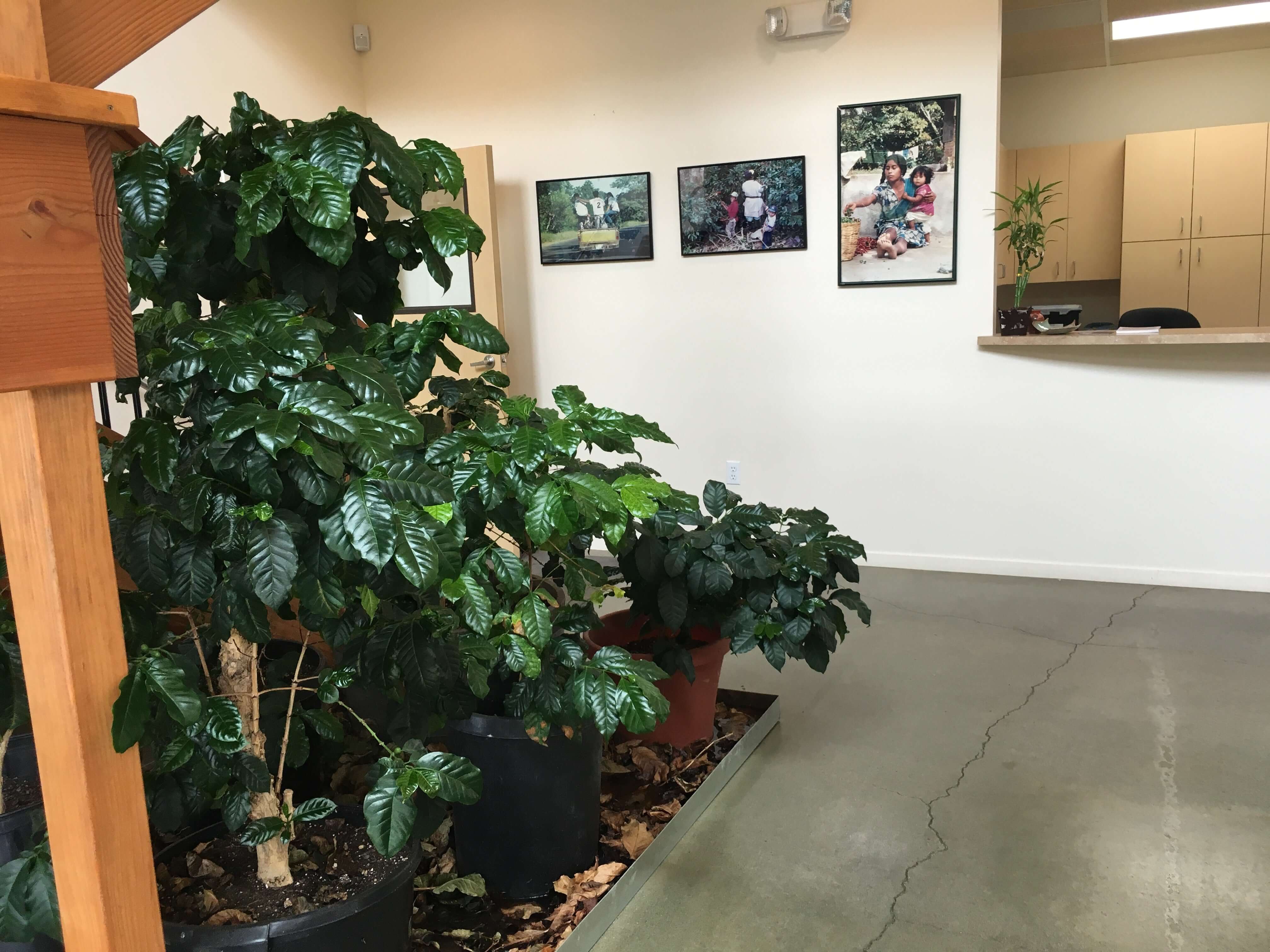
News, Stories and more
Our Blog
View BY :

Earning Beans For Coffee Rewards
Thanksgiving Coffee Company Appreciates You We have made it simple and effective for you to get the appreciation we think you deserve. It is the “Earn Beans” reward system. Yay! These rewards will be counted as “beans” which you can redeem as discounts. The more beans you earn the greater the discount, all the way up to free products!
read more-
![How To Grow Coffee Trees]()
The Roots of Your Morning Brew: Understanding the Coffee Plant
For many, coffee is the ritualistic start to the day, a beloved beverage that energizes and comforts. Yet, beyond the steaming cups and aromatic brews lies the coffee plant, a botanical wonder that is the genesis of every coffee lover’s journey. At the heart of Thanksgiving Coffee Company is a deep appreciation for this living tree source—the company respects and values the entire process, from the nurturing soil that cradles the seed to the satisfying sip that completes the circle. We have been connecting to this plant by growing our own coffee trees right here for many years.
Coffee Trees Growing at the Thanksgiving Coffee Company Office
Anatomy of the Coffee Plant: More Than Just Beans
The coffee plant, with its glossy green leaves and ripe cherries, is both an aesthetic marvel and a complex organism. Beneath the soil, its roots anchor the plant and absorb vital nutrients. Above ground, the leaves play a crucial role in photosynthesis, while the bright red cherries house the precious beans inside. It's these beans that, once processed and roasted, give rise to the alluring aromas and rich flavors that characterize each cup of coffee.
Varied Flavors: The Many Varieties of Coffee Plants
Ripe coffee cherries on the Arabica coffee tree grown at the office
When you think of coffee, the two dominant species: Arabica and Robusta, likely come to mind. Arabica is prized for its smoother, more nuanced taste, while Robusta is revered for its robustness and higher caffeine content. However, there exists a myriad of lesser-known varieties, each with its own unique flavor profile, waiting to be discovered by eager coffee connoisseurs.
From the Soil to your first Sip: How Terroir Affects Your Coffee
Like fine wine, coffee is influenced by its terroir—the environment in which it's grown. The climate, soil composition, and even the angle of sunlight on the slopes where coffee plants thrive collectively contribute to the coffee's flavor profile. These factors, often subtle and complex, define a coffee's body, acidity, and notes, creating an array of tastes as diverse as the landscapes from which they come.
Ripe cherries harvested from our coffee trees.
Ready to Discover the Flavor of Your Own Coffee
If you are inspired to develop a closer relationship with your coffee and want to lean into the root system of your daily coffee ritual, we have a series for you. Our co-founder Paul Katzeff has been growing coffee trees at home for years, and will lead you through his process.
Check out the series:
Part I: The Beauty of Growing Coffee Trees in Your Home
Part II: All you Need to Know About Growing Coffee Trees At Home
Part III: Caring For Your Coffee Tree
Coffee Tree Source:
Lavender Grace is the Sustainability Consultant for Thanksgiving Coffee Company.
How To Grow Coffee Trees
read more -
![Office Coffee Tree Harvest]()
Harvesting the fruits of our own coffee tree
Paul Katzeff harvesting our coffee tree full of ripe coffee cherries.
It all started with some seeds that Paul smuggled back to the states from Los Piños Farm in Matagalpa, Nicaragua. You might know this farm if you’ve tried these two coffees: Byron’s Natural and Byron’s Maracaturra light roasts. It may look as though it took minimal effort for this tree to thrive indoors, but it’s quite the contrary. Paul planted the seeds, taking about two months for them to sprout. It grew to about two feet when it started suffering and needed more TLC. The amount of light it was getting downstairs was not sufficient, although the temperature was sublime, but coffee trees need exactly the right balance of light, water, temperature, and soil. Using the process of elimination, Paul discovered it couldn’t be any of those, except maybe light so he brought the tree up to the office of Greg Barrett, our director of operations where it saw new light and slowly came back to life in his care.
It generally takes about 4-5 years for a coffee tree to bear fruit, which is then harvested once a year in standard conditions. This leads to a huge issue for coffee farmers when demand rises for coffee, and they want more crops, they can’t exactly grow more on the spot. An analogy Paul used to explain this is “if you’re a carrot farmer, you just plant more carrots, but if you’re a coffee farmer, you plant and you have to wait four years.”
Today, we’re harvesting a four-year-old coffee tree right here in our TCC office. We are making sure to pull the cherries but not completely pull the nodes off. The reason for this is that next year’s cherries will grow back from the same node where it was pulled before. The coffee you buy from us is picked by hand by each farmer we partner with, and de-pulping is done by machine. All of the pulp discarded from coffee cherries can be used to make flour, wine, jam, and pie and it can even be eaten raw. Once the coffee beans are de-pulped, we’re letting them dry for a couple of days before we roast them. We’re doing this all by hand in-office to show you the process and that it can be done at home!
Stay tuned to hear about the roasting process.
Harvested coffee cherries.
Depulping the cherries.
Find out more about growing coffee trees at home:
All You Need To Know About Growing Coffee Trees in Your Home.
Office Coffee Tree Harvest
read more -
![Part I : The Beauty of Growing Coffee Trees in Your Home]()
Part I: The Beauty of Growing Coffee Trees in Your Home
When I was growing up in the Bronx in the 50’s my mom would stick three toothpicks into an avocado pit, balance the pit on the rim of a water filled glass, submerging the bottom half in the water. In a few weeks up would pop a plant with iridescent green leaves.
Today, 60 years later, I follow in my moms footsteps and plant coffee seeds in a 2 inch wide flower pot, wait 3 months for the seeds (beans) to pop up, and then nurture the seedling through three successive repottings into larger containers until the tree is 7 feet tall and producing thousands of beautiful red cherries.

Paul Katzeff, with his coffee tree full of ripe cherries.
Me with a three year old coffee tree. Note the small amount of the deep red cherries of the trees first crop sprinkled throughout the tree.
Last month I received a letter from Woody Hastings . I gave a him seedling coffee tree back in the summer of 2006 . He took the gift seriously.
He wrote to me last month and sent along these photos by way of a “tree progress report . His letter inspires this blog entry.
“Hi Paul,
I’m Woody, the guy you gave?/sold? a coffee plant to at SolFest 2006. You and I have crossed paths at SolFest ever since and I think a few times at GreenFest too.Here’s what I look like…

June and Woody Hastings
Or maybe you recognize my wonderful wife June who works at Global Exchange.
Anyway, I wanted to show you a couple of photos of the fantastic coffee plant you gave me. It is now fruiting with about 20 cherries and I plan to roast them per your instructions at the last SolFest and have a cup of my own home grown, home roasted, home-brewed coffee! And the plant, which is about 3 feet tall…
Really just thought you might like to receive such a good progress report, and wanted to thank you for giving me this living thing that has brought me (us) so much joy and entertainment!
Happy New Year to you.
See you at SolFest!
Cheers,
WoodyPS, Almost forgot to mention, Mr. Coffee, as the plant is known, was dressed up with ornaments and served as our “christmas tree” this past December. What a hoot!

Mister Coffee, June and Woody's Coffee Tree
I wrote back…….
Woody,
I wonder if I can put your letter and photo on our website so other people can learn and see your success with the coffee tree, I am proud of you. You found the magic within you. I Thank you for the photos. You will need about 30 beans (15 cherries) for a cup of coffee. about 12 -15 grams) What is your cycle ? When does it flower and when are the cherries deep red? Where do you live?
PaulWoody replied,
Hi Paul,
Feel free to use whatever I sent you for your website, plus the following info too if you wish. If memory serves well, I think I first noticed the flowering in mid-summer, cherries emerged in the fall, and started turning red in December. Judging by the pace at which they are all turning deep red, I will have harvested them all before the end of February.I live in Noe Valley, in the geographic center of San Francisco, west of the Mission, east of Twin Peaks. We have a tall east-facing window in our living room and that is where Mr. Coffee spends most of his time. You had told me that they like morning sun, and he gets a lot of it there. On nice warm days we sometimes put “him” out on our deck that gets a lot of sun. Only problem with that was that one day we put him out when it was very hot and a few of the leaves “burned.” The soil I potted it in is a mix of bagged planting soil and other soils from various plantings, plus a small amount of worm castings. I’ve fed it diluted worm tea from my worm bin about once every two months. I think that helped a lot. Since I have 20 cherries, it will be one strong cup!
Mister Coffee Dressed up for Christmas
I think the one thing we have been mystified by is how the blossoms could have been pollinated. I was happy to see the blossoms and figured they would just drop and produce nothing. So surprised and gratified to actually get cherries, but how does that work? Self-pollinating?
Best Regards,
WoodyContinue this blog with my Tips for growing coffee trees at home successfully.
Read The Full Series
Part I: The Beauty of Growing Coffee Trees in Your Home
Part II: All you Need to Know About Growing Coffee Trees At Home
Part III: Caring For Your Coffee Tree
Part I : The Beauty of Growing Coffee Trees in Your Home
read more -
![Springtime for SongBirds]()
The best coffee is grown the traditional way— slowly, under a canopy of shade from taller native hardwood trees. Shade-grown coffees are carefully tended, harvested, and processed by people who know and love coffee, and who depend on it for their livelihoods.
Traditional shade-grown coffee really is a win for everyone: amazing coffee flavors, a fair wage for the coffee farmers’ hard work, and a lush natural habitat for migratory birds. So much good comes from a just cup of coffee.
The History of Shade Grown
By 1996, the United States forests had run out of hardwoods such as oak, ash, maple, cherry, and all the wild fruit and nut trees. These are important woods used in furniture making, home building, veneers for plywood, doors, window frames and a host of other minor but important uses.
The timber industry needed another source of hardwood, so they targeted the temperate rainforests where coffee was grown. The coffee tree is a shade loving plant that withers in the sun and needs shade to be a healthy producer of the coffee fruit. Mahogany and a dozen other hardwood varieties were there for the loggers if only they could convince coffee farmers to cut down their trees.
The destruction of these native hardwood forests is a long story of deception. Governments, in collaboration with multinational corporations, set out to convince farmers to grow their coffee in the sun, claiming that yields would increase and incomes would rise.
Without the leaf litter from the big hardwood trees to fertilize the soil every year coffee trees at Nicaragua Coffee Farms would need oil-based fertilizers. This is how the petrochemical companies became involved. Now with more sunlight reaching the ground, weed killers would become essential. This is how herbicide producer Monsanto became involved. Without the forest habitat for migratory songbirds, natural pest controls were lost. This is how the need for chemical pesticides became essential.
The big chemical companies found new markets and the timber companies gained new inventories of almost unlimited, inexpensive hardwoods. The coffee farmers paid for all this with higher costs, lower quality coffee, toxins entering the water supply, and a 90% loss of biodiversity on their farms.
At least half of all coffee grown in the northern neotropics has already been converted to full-sun plantations.
Preserving these precious jungle forests not only protects biodiversity, but it’s also our greatest asset in mitigating the effects of climate change.
The Smithsonian’s Bird Friendly® certification is the most rigorous environmental certification possible for coffee, and the only one that justifies the use of the much-abused term “shade-grown.”
Based on years of scientific research, the SMBC has developed strict criteria for evaluating shade coffee farms. An independent, third-party inspector determines whether a farm meets these criteria or not. Only those farms that also meet organic certification standards are eligible to be certified Bird Friendly®.Try One of Our Songbird Coffees
Protect biodiversity, with your morning Cup
Like us on Facebook and follow along on Instagram and Twitter for frequent updates, promotions, giveaways and more!
Springtime for SongBirds
read more -
![Part III: Caring for Your Coffee Tree]()
The Beauty of Growing Coffee Trees in Your Home
 by Paul Katzeff, Co-Founder & CEO
by Paul Katzeff, Co-Founder & CEO
Coffee trees are remarkable for their ability to regenerate after severe pruning.Severe pruning is hard on the psyche. You have taken care of your tree for 15 years and it has produced an amazing amount of enjoyment as it took you through its seasonal life cycles for 12 of those years. You are no Paul Bunyan with an anxious ax. You want to save trees, not chop them down. So you are about to break your own heart and you know it. You are, however, about to rejuvenate your tree and it will love you for your bravery. Sharp pruning shears are all that you need (and faith).

“The Cut” – May 4, 2016
On May 4th, 2016 the “cut” was made about 18” from the base of the tree; it broke my heart. That’s because I harvested 511 cherries from the tree, de-pulped them, soaked the seeds in a water-bath, dried them for a week on a window sill, and in the end had about 12 ounces of green beans. We invited the mayor of Fort Bragg, chefs, a winery owner, and our staff to a once in a lifetime “cupping.” We put the roasted beans on the cupping table with coffees from Central America and were pleasantly surprised when they received the highest praise for flavors we described as bright with hints of lemon, peanut butter, and dark chocolate.

27 Days Later – June 1, 2016
Note the small fresh leaves close to the trunk. This tree has plenty of root spore and therefore it is overpowered. It has stored its regenerative powers and now those roots have much less plant structure to support. It will put on a vigorous growth spurt over the next 6 months. Notice a new trunk beginning about 8” up the main trunk. We will watch it and hopefully 2 or 3 others will emerge from the lower trunk, proving the structure for the new tree.

48 Days After “The Cut” – June 21, 2016
The tree is beginning to fill in its remaining architecture with bright new leaves and a second trunk has emerged at about 10” from the base. We are on our way. There is nowhere to go but up and out.
Stay tuned for photos of its progress over the next 6 months.Read The Full Series
Part I: The Beauty of Growing Coffee Trees in Your Home
Part II: All you Need to Know About Growing Coffee Trees At Home
Part III: Caring For Your Coffee Tree
Part III: Caring for Your Coffee Tree
read more -
![Part II: All You Need to Know About Growing Coffee Trees in Your Home]()
The Beauty of Growing Coffee Trees in Your Home
• From Thanksgiving Coffee Company, the 2017 Roaster of the Year •
• Shop award-winning roasts Kenyan Peaberry, floral Ethiopian Yirgacheffe, and the beloved fruity-chocolatey Paul’s Blend.The coffee tree is an evergreen. It does not shed its leaves. They are on the tree year round. That makes them good for indoor beautification. You can get them to grow into a tree that is 5-8 feet tall or you can train them to be a bush 3-4 feet tall. They are pretty flexible.
Where to find coffee tree seedlings:
I have found them most consistently in places like Safeway, Longs, Rite Aid and Whole Foods flower Departments. These places carry mostly impulse items when it comes to plants. I think they all have the same supplier, or it seems that way. Your local florist may have them too and if they don’t carry them in stock, they will order a pot or two for you.
What to look for:
Seedlings in the stores are no more then 3-4 inches tall and are about 3 months old . They were grown from seed. Usually, they will come in a 2-4 inch pot, and there will be four to six little starts bunched together in the center to make it look substantial. Price is usually between $4.95 – $8.95.
What to do when you get the pot of seedlings home;
You have purchased one pot but you have acquired six trees. You don’t want them to grow up together so you need to separate them and repot each seedling in a 4 inch diameter pot. Here’s how you do it: Submerge the pot of seedlings in a bowl of warm water that is on the cool side of warm. Leave overnight . This does two things. It allows the seedlings to load up on water and it softens the potting soil . Get your potting soil and 4 inch pots together for your replanting . Now remove the loose ball of soil with the seedlings from their pot and lay on some newspaper . Slowly and softly pull the seedlings apart. Don’t be afraid of killing the trees ,they are very hardy and strong. Now repot each individual seedling in its own 4 inch pot. Six trees for the price of one !
Lets talk soil and repotting;
For the four inch pot and your initial repotting, you should use an organic potting soil. It is rich enough in nutrients to feed the plant until it is eight inches tall. You won’t need to add fertilizer to get the trees to 8 inches. Now things begin to change because at eight inches tall, the tree has spread out it’s root system throughout the small pot and unless you repot to a larger vessel, the tree will not grow much more. So, move the tree into a 12 -18 inch pot . This is large enough to add in soil amendments. At this stage of the plants growing history it needs lots of Nitrogen so keep that in mind . We are helping the tree grow trunk, branches and leaves. That requires lots of nitrogen. This pot stage should take your tree up to the 24-36 inch size. (this should take 12 to 18 months) .
When the tree gets to the 24-36 inch size it is time for it’s final repotting into a half wine barrel or the equivalent. Now your tree is ready to kick into high gear because it senses that it can grow a root system that can support full production. Within one year from this last repotting your tree will have grown to four feet and it will begin to create beautiful white flowers that will fill your home with the scent of Jasmine and orange blossoms.Nitrogen is no longer needed in growth level amounts . Now it is the flower and fruit supporting supplements that are needed. Rose food is my favorite coffee food but try to stay as organic as you can. It effects the flavor of the coffee you will be getting and you don’t need to support companies that manufacture oil based chemical fertilizers.
Flowering Phase: It lasts about a month. The sweet aroma will blow you away, but that will come to an end just about the time you are tired of coming home to paradisiacal aromatics. Coffee is self pollinating so do not worry about pollination. The flowers form at the nodes on each branch, just behind the leaves. Each flower will become a fruit (coffee cherry). The flowers will turn brown and fall off the branch. Not to worry. Left behind is the carpel, a small round ball that over the next six months will grow into a fruit with one or two seeds. The seeds are known as “coffee beans.”

Flowering coffee plant
The Fruiting Phase:
This phase lasts about six months. Coffee cherries ripen slowly. For the first 5 months they will be green and rock hard. Then they will begin to lighten and turn pink and then cherry red, then dark red to purple. Dark red is when you pick the cherries.
Fruting Coffee Plant with ripening coffee cherries
Watering; Coffee trees like water and need enough to feed the leaves and support the fruit. But they don’t like to sit in water so water from the top, like rain waters forests. Water until the water comes out the bottom of the Pot. Use warm water. That is what the tree would get in the tropics. Why shock the tree as if it was jumping into an ice cold lake? Warm water feels good to the tree just as it does to our face when we wash. And if you live where the air is cold at night , you can bet the soil is cold too. So warm up the soil and you have better growing conditions, conditions that the tree will recognize and be thankful for.
Ripe Coffee Cherries
Where to place tour growing and mature tree;
Coffee is a shade loving tree that grows under the canopy of the forest . It needs little direct sunlight . Direct sunlight after noon time will fry the leaves and kill the tree. Yo need to position your tree so it gets morning direct sun. This is perfect light . East facing windows do the trick. As the sun goes to the west , the light coming into your home from an easterly window is soft , yet still bright enough to provide the equivalent of shaded sun. If you bring your tree outside, remember, a 10 minute frost will kill it and so will 3 hours of direct afternoon sunlight between May and November.
Cherry Picking and Roasting:
When the cherries are ripe, and they will all ripen over a 2 month ripening period, you have to take them from the tree. With a simple twist and pull they will come off easily.

Ripe Coffee Cherries
Pick once a week , only the true red all over ripe cherries. Squeeze the seeds out of the cherries and drop them into a bowl of water for 24 hours. This softens the remaining pulp stuck to the beans and makes it easy to remove after the beans are dried. Place the beans onto some newspaper ( it is important that the stories on the page are positive and uplifting) and allow them to dry slowly. Sun drying is good but watch out you do not bake them. They should take about a week to dry to a stable condition. Repeat the process until all your cherries are picked and put to dry. Don’t forget to taste the pulp!
Roasting is the next step in this cycle. That is for another time and another blog entry.Part II: All You Need to Know About Growing Coffee Trees in Your Home
read more











